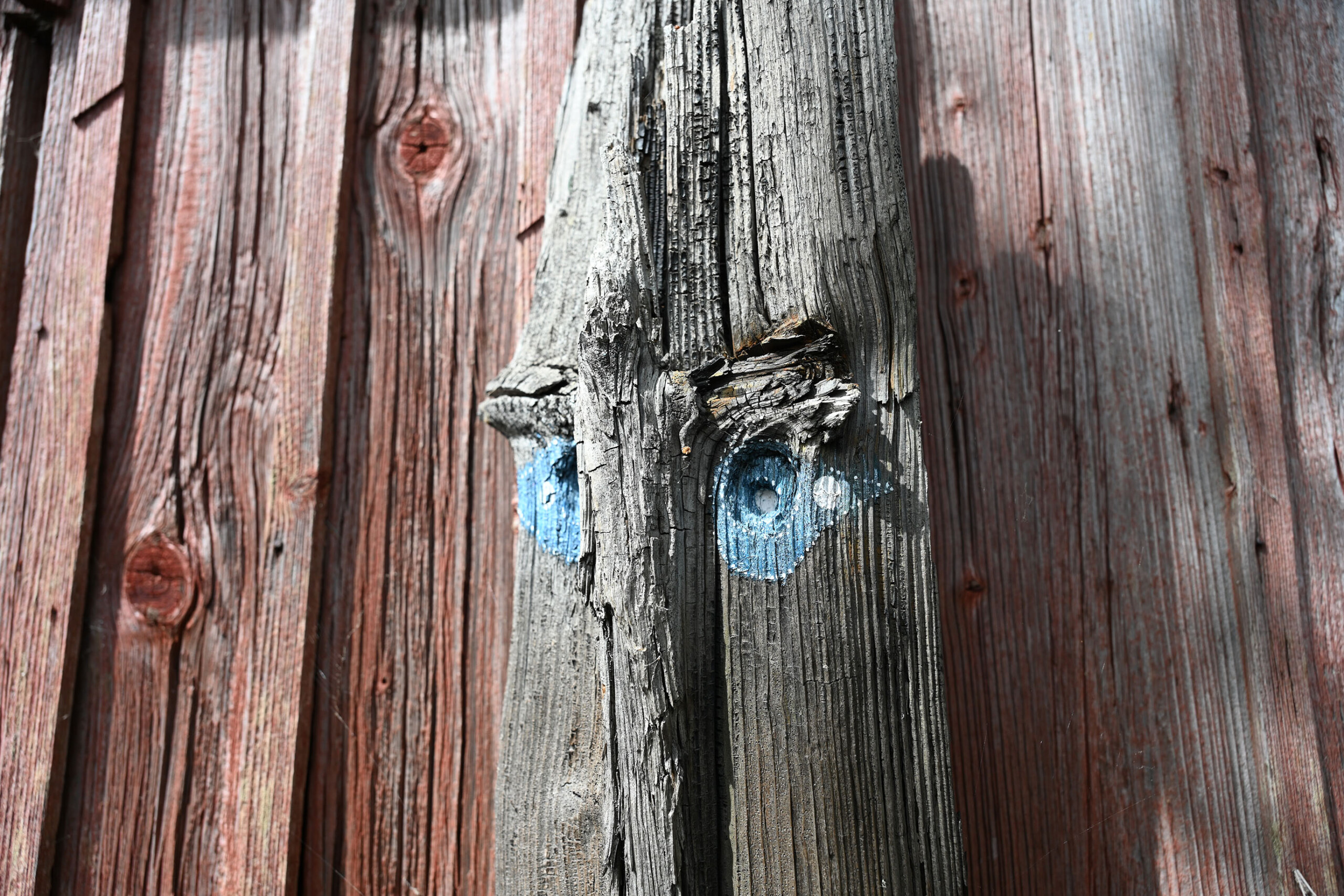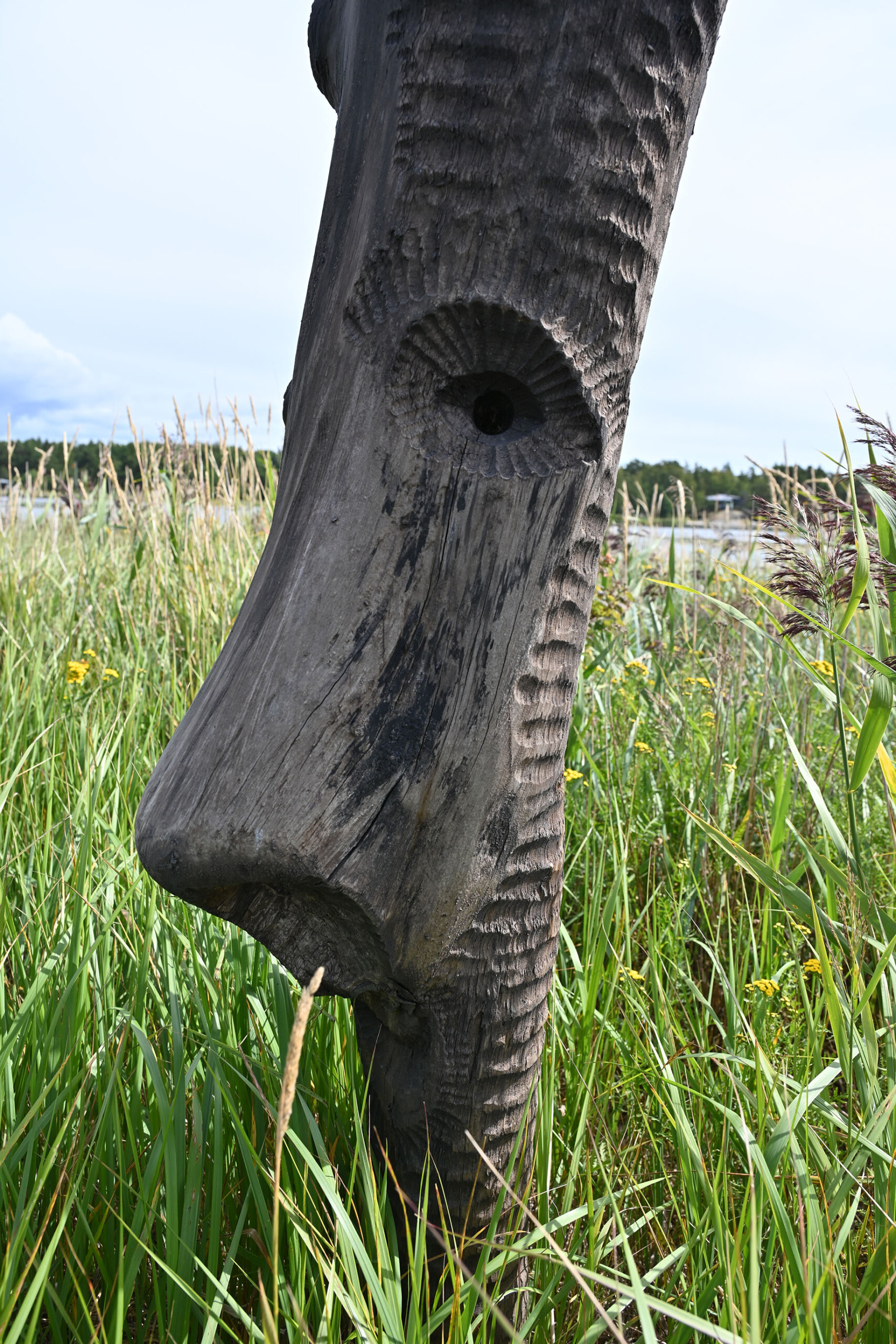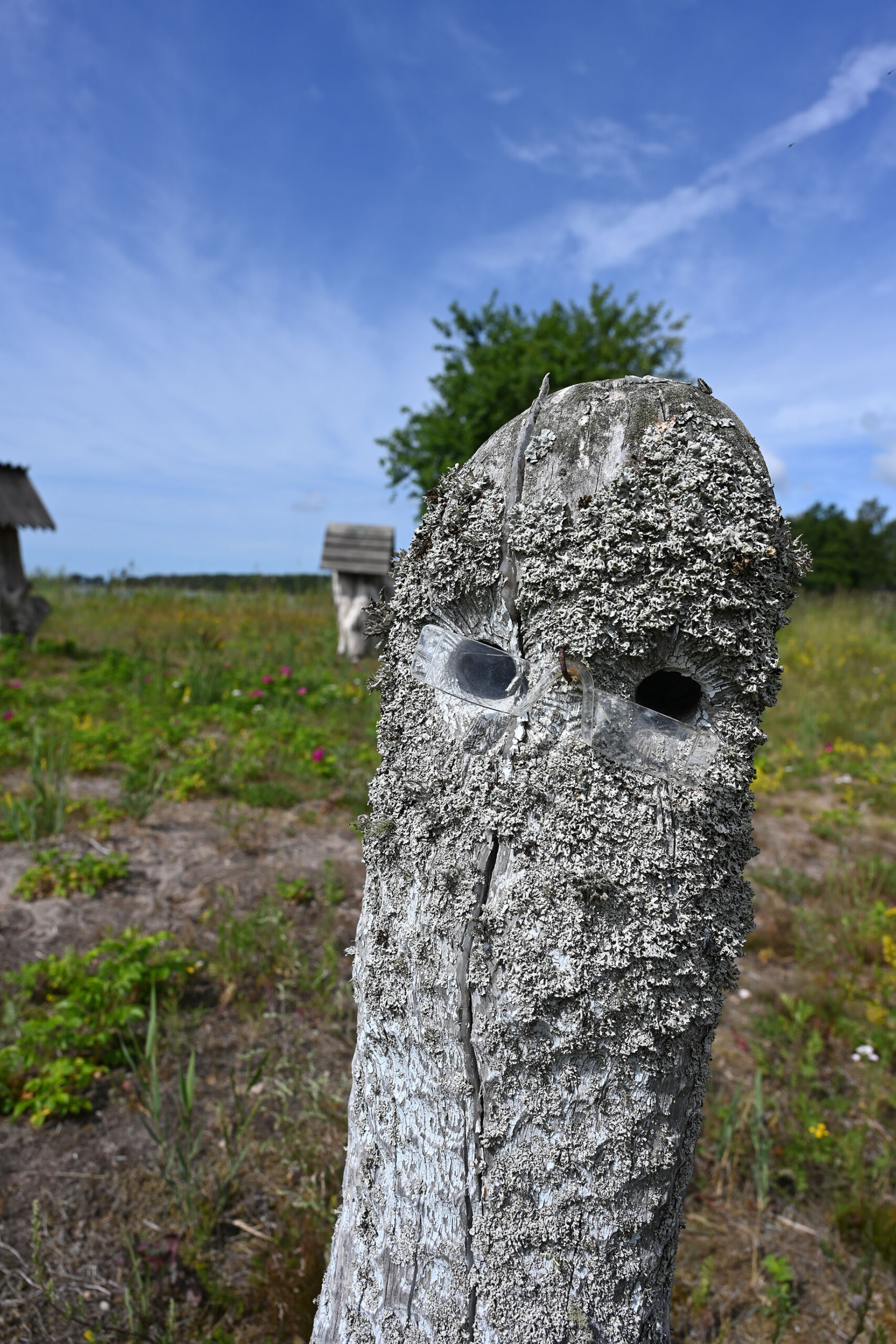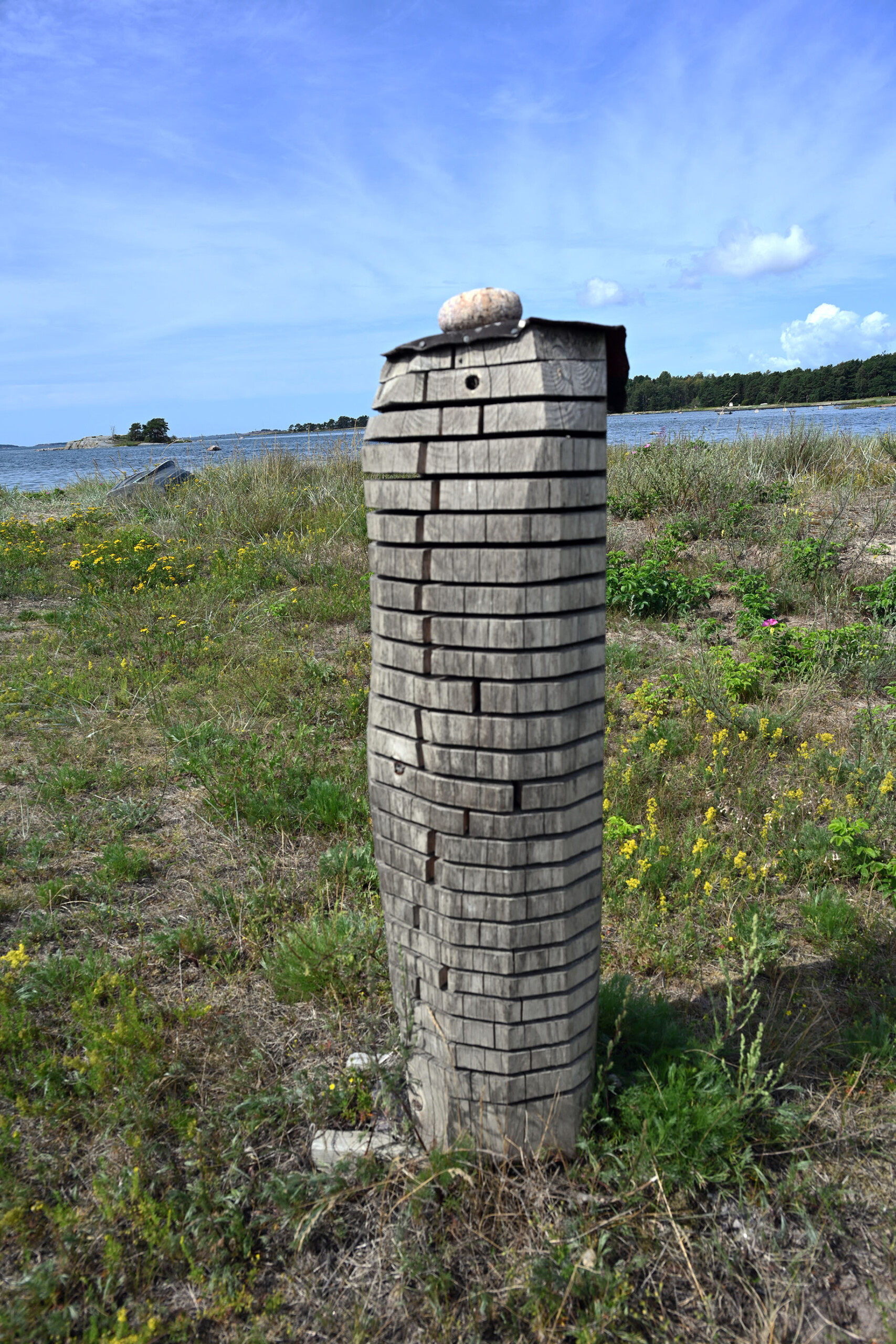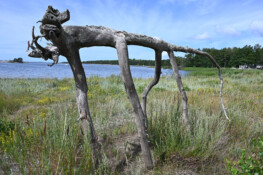
Knut Sundberg
Hanko (1940-2004)
Långörintie is a small, private dirt road in the small village of Täktom in Hanko. It ends at a tiny marina, where small Falu red boathouses dot the sandy beaches on the scenic neck of land. Here, you’ll find pale, sun-roasted sand, gnarled little pine trees sprained by the high winds, long grass, meadow flowers, the dreamy buzz of butterflies and bumblebees in the summer heat and sunshine. The smell of the sea, the gentle meeting of shallow water and the sandy sea floor.
Some sixty works by Knut Sundberg are set in the Långörintie environment and they convey a deep sense of the sea and nature. Sculptures made of driftwood, large pieces of wood washed smooth by the sea, peculiar gnarls of branches, large tree roots and bits of timber found ashore.
About a tenth of Sundberg’s sculptures can still be found in this natural environment; the rest have already been destroyed by time and changes. Other things created by Sundberg during his lifetime and his various interests as an artist, draughtsman, graphic artist, landscape architect, designer, sound designer, musician, troubadour, writer, cultural and social critic, and ethnologist, have largely gone unrecorded and never received the recognition that they deserved.
Knut “Knutte” Göran Sundberg was born during WWII, on 9 March 1940 – just when Hanko had been forcibly leased to the Soviet Union at the end of the Winter War. The family was evacuated to Siuntio but later returned to Hanko. Sundberg attended Hanko comprehensive school for five years, after which he moved to Helsinki to study graphic arts and drawing.
However, Knutte, who had dreamed of working as a graphic artist at Tilgman’s printing house, chose to return home to Täktom instead of living in the city, and worked as a technical draughtsman in Hanko, and the family had two children. In 1961, Sundberg followed in his father’s footsteps and got a job at the Hanko customs house. Against the mundane backdrop of his work routine, he started to fill his life with music and sculptures that he placed in his surroundings.
Coming from a family of fishermen, Sundberg felt a deep connection with ordinary, nature-based life and culture, and he was interested in folk art and a slow, simple way of life lived in harmony with the environment. Sundberg collected driftwood, rustic boats and boating equipment for his works.
Sundberg signed his best works simply with “Knutte”. He got cancer and passed away in 2004, while his work was still unfinished. After the artist’s death, his relatives and the villagers founded the friends of Knutte association, Knuttes Vänner, and salvaged some of his works, though most of them had already been damaged or lost.
As you walk along the seashore at the Långörintie small-boat harbour, you will come across works that seamlessly blend in with the meadows and the forests. The works give a sense an all-pervading connection with nature and oneness with the silence, vastness and beauty of nature.
Sundberg’s sculptures are not placed along the path in a systematic manner; they appear to grow from the ground here and there, following nature’s logic. As you discover and admire the works, it is mind-boggling to think about the number of sculptures that have already disappeared, been destroyed, washed into the sea of time – the transience and fragility of everything, the creation and fading of art.
Sundberg engraved and handled wood with a sophisticated and minimalistic touch that brought out the spirit of scales, eye-like holes and forms in driftwood. The design of his geometric works made of stacked and step-like structures is, at its best, as good as any sculptures by contemporary artists.
Sundberg’s works often have a small felt roof to protect them against the elements, and some still show traces of small and precise patterns painted in the light blue of the sky, bright red, yellow and white, inspired by folk craft patterns and designs. The originality of Sundberg’s ideas, his skill, the uplifting and unhurried atmosphere of a summer’s day at the seashore that makes one lose all sense of time emanate from his works; they are praises for nature and for the privilege of being a part of it.
Text and images: Heini Heikkilä
